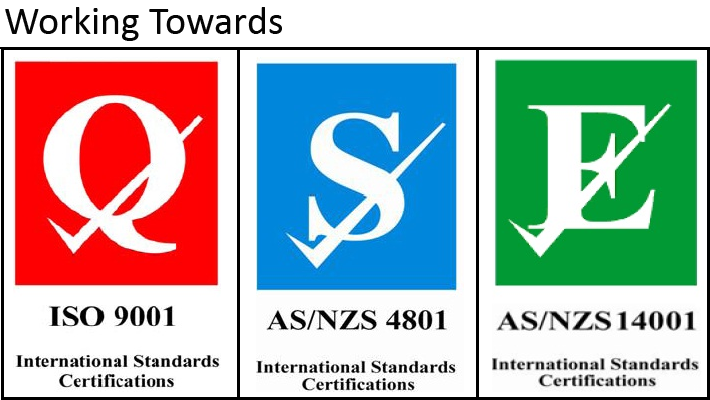
Non-Destructive and Destructive Welding Testing
BITS have fostered strong working relationships and agreement with local NATA approved Testing Laboratories, who recognise our strengths in welding services and certification capabilities. As required during the development of your Weld Procedure and as part of your Welder Qualification, BITS can organise witnessing on your behalf for both Non-destructive Testing (NDT) and Destructive Testing (DT).
Non-Destructive Weld Testing
Non-Destructive tests are a reliable, accurate and cost effective method for independently verifying the quality of a weld without altering the properties of the product manufactured. There are three key methods of non-destructive testing that we utilise.
- Magnetic Particle
- This process involves applying an electric current through the material while spraying/sprinkling visible ferrous particles on the test surface. The particles are attracted to the area of the weld defect appearing the shape of the fault.
- Liquid Penetrant
- For this test, the Weld is coated with a dye solution. After the excess dye is removed, a developer is applied drawing penetrant out of imperfections open to the surface.
- Radiography and Ultrasonic Testing
- Radiography uses an x-ray device to obtain an image weld density Possible imperfections are identified through density changes. Ultrasonic inspection uses high frequency sound waves to detect imperfections within the weld.
Destructive Weld Testing
Destructive testing is conducted to determine whether the weld is able to tolerate extreme pressure or to verify the properties of the weld such as strength, toughness and hardness. This type of testing is often simple to administer, provides more information and is easier to interpret. There are three destructive tests that we use.
- Hardness Testing
- This type of testing assesses the strength of the weld by evaluating the hardness around the heat affected zone (HAZ).
- Bend Testing
- The bend test uses a coupon that is bent in three point bending to a specified angle. The outside of the bend is extensively deformed so that any defects in the material will be revealed by the premature failure of the coupon.
- Tensile Testing and Impact Testing
- Tensile testing involves the use of a machine to pull and elongate the welded material. Ultimate strength is the most a welded material can sustain before buckling under the pressure.




